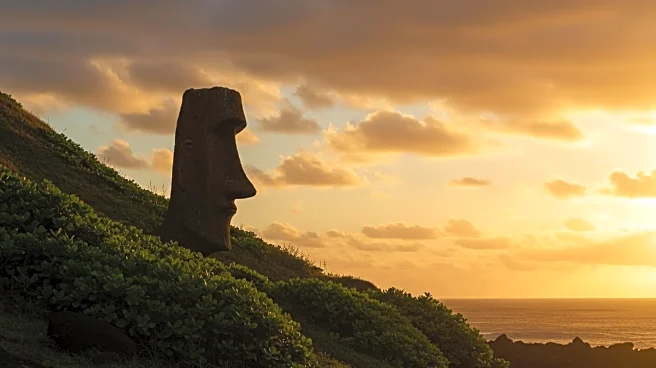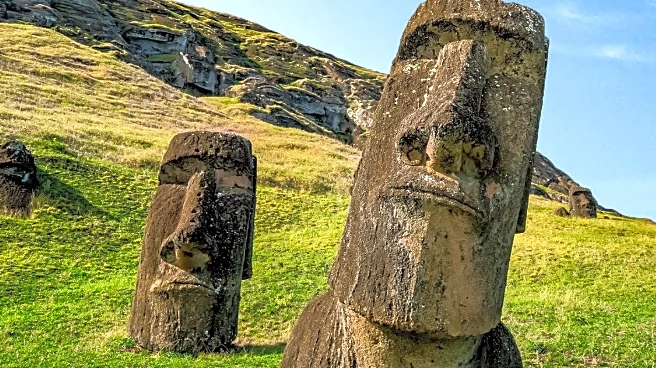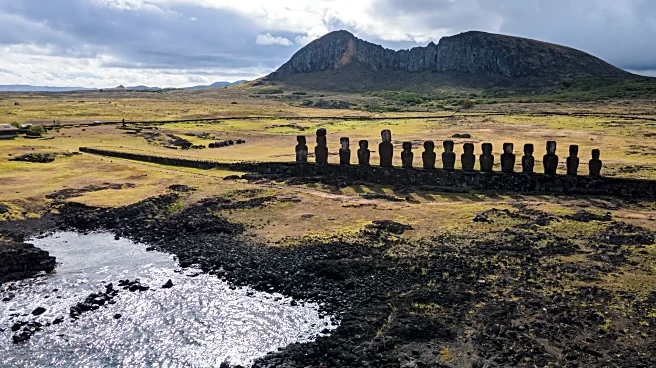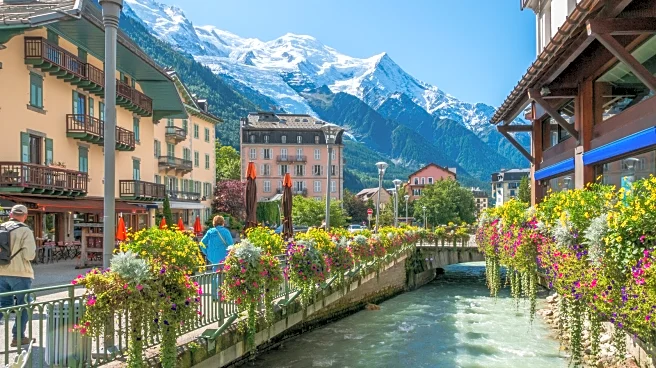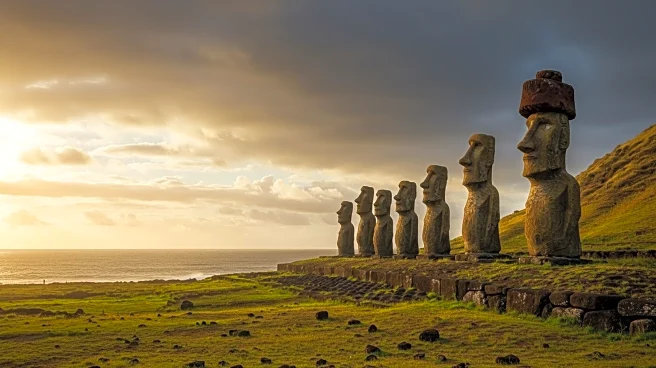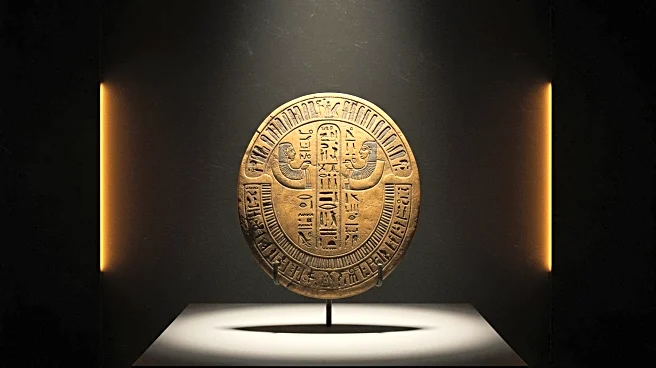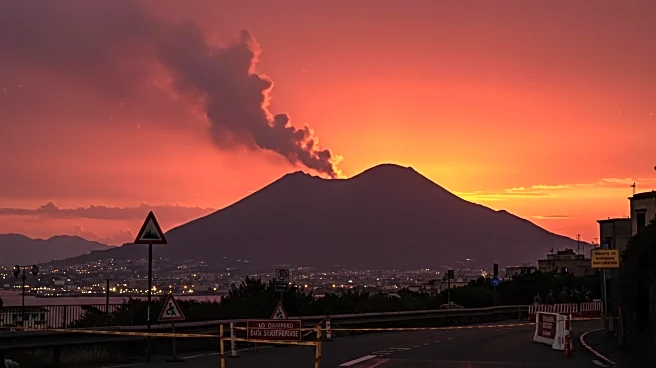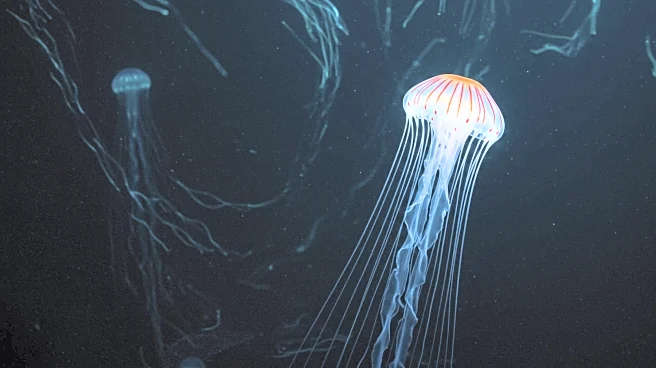What's Happening?
A recent discovery on Easter Island has revealed a previously unknown moai statue in a vanishing lake, raising concerns about the potential for more hidden statues beneath the dried mud. Archaeologist Terry Hunt has suggested that ground-penetrating radar could be used to locate additional statues. This discovery comes amid warnings that rising sea levels could endanger the island's iconic moai statues by 2080, highlighting the environmental challenges faced by these ancient monuments.
Why It's Important?
The discovery of hidden moai statues on Easter Island underscores the cultural and historical significance of these ancient artifacts. As rising sea levels threaten the island, there is an urgent need to protect and preserve these statues, which are vital to the cultural heritage of the Rapa Nui people. The potential loss of these monuments could have profound implications for tourism and the local economy, as the moai are a major draw for visitors. Additionally, the environmental challenges faced by Easter Island serve as a stark reminder of the broader impacts of climate change on cultural heritage sites worldwide.
What's Next?
Efforts to locate and preserve additional moai statues on Easter Island are likely to intensify, with archaeologists potentially employing advanced technologies such as ground-penetrating radar. Conservationists and local authorities may need to collaborate on strategies to mitigate the impact of rising sea levels, possibly involving the relocation of vulnerable statues or the construction of protective barriers. The international community may also play a role in supporting these efforts, given the global significance of the moai statues.
Beyond the Headlines
The situation on Easter Island highlights the ethical considerations involved in preserving cultural heritage in the face of environmental threats. Balancing the need for conservation with respect for the cultural and spiritual significance of the moai to the Rapa Nui people is crucial. This case may prompt broader discussions about the responsibilities of archaeologists and governments in safeguarding cultural heritage against climate change.
